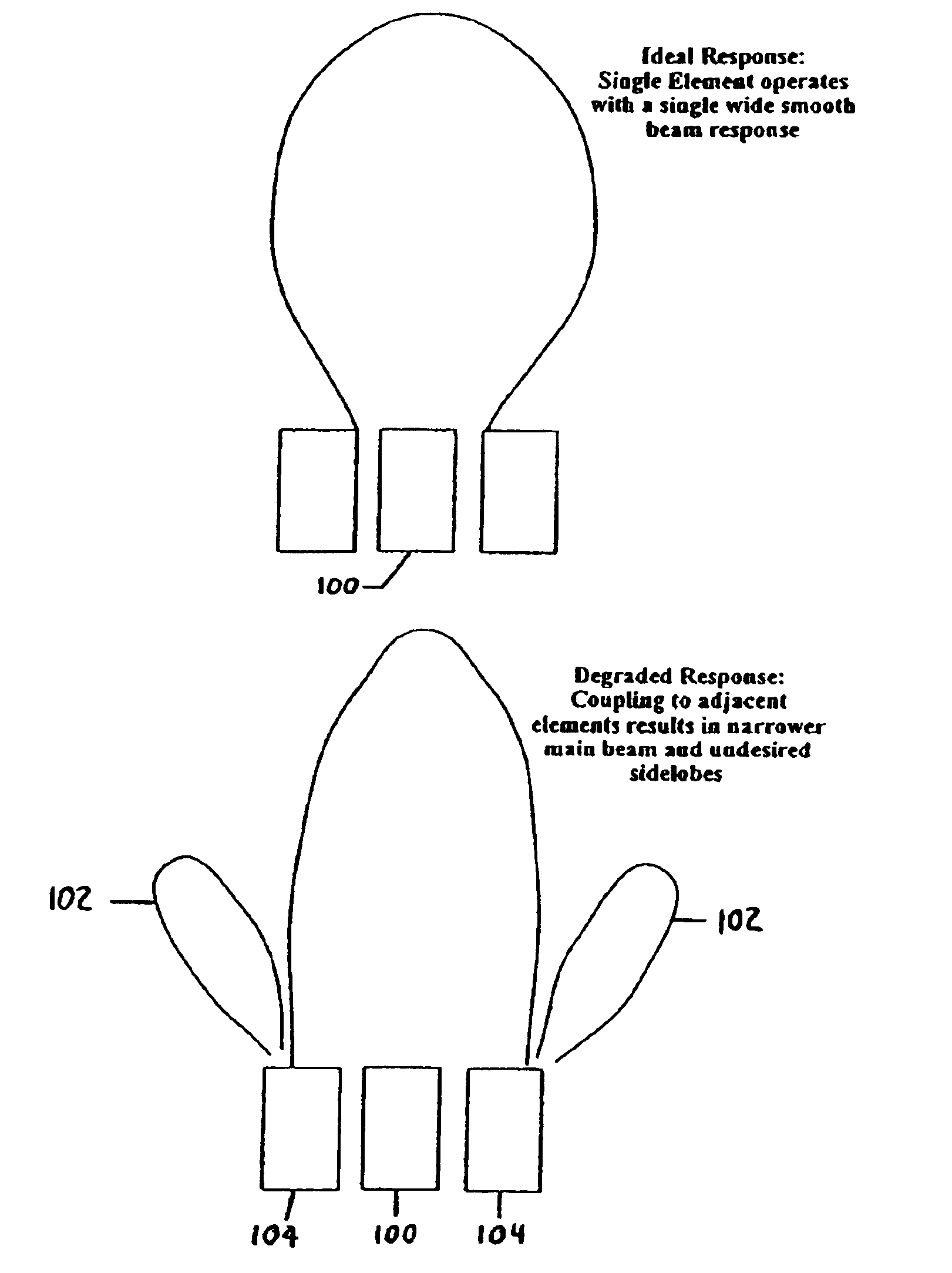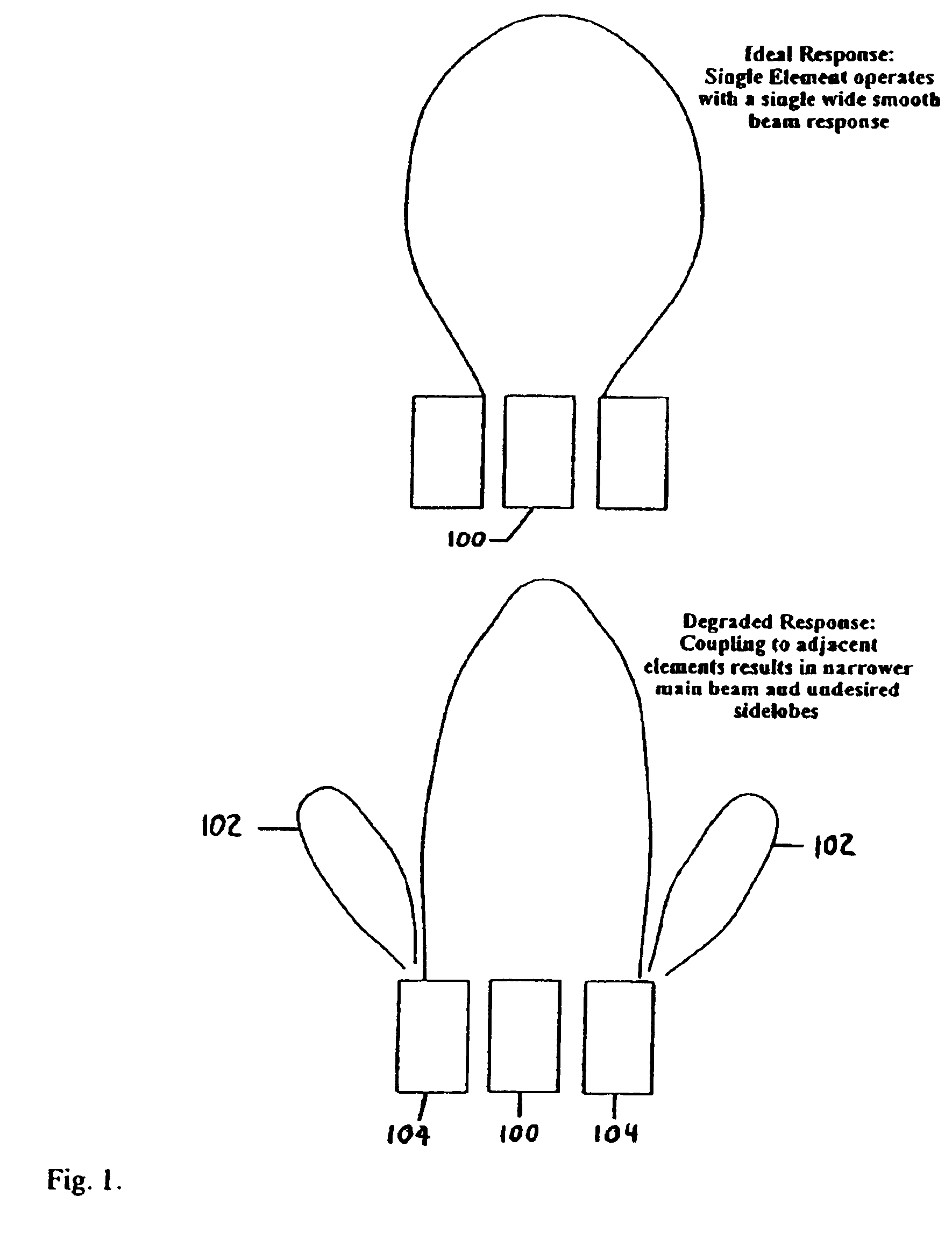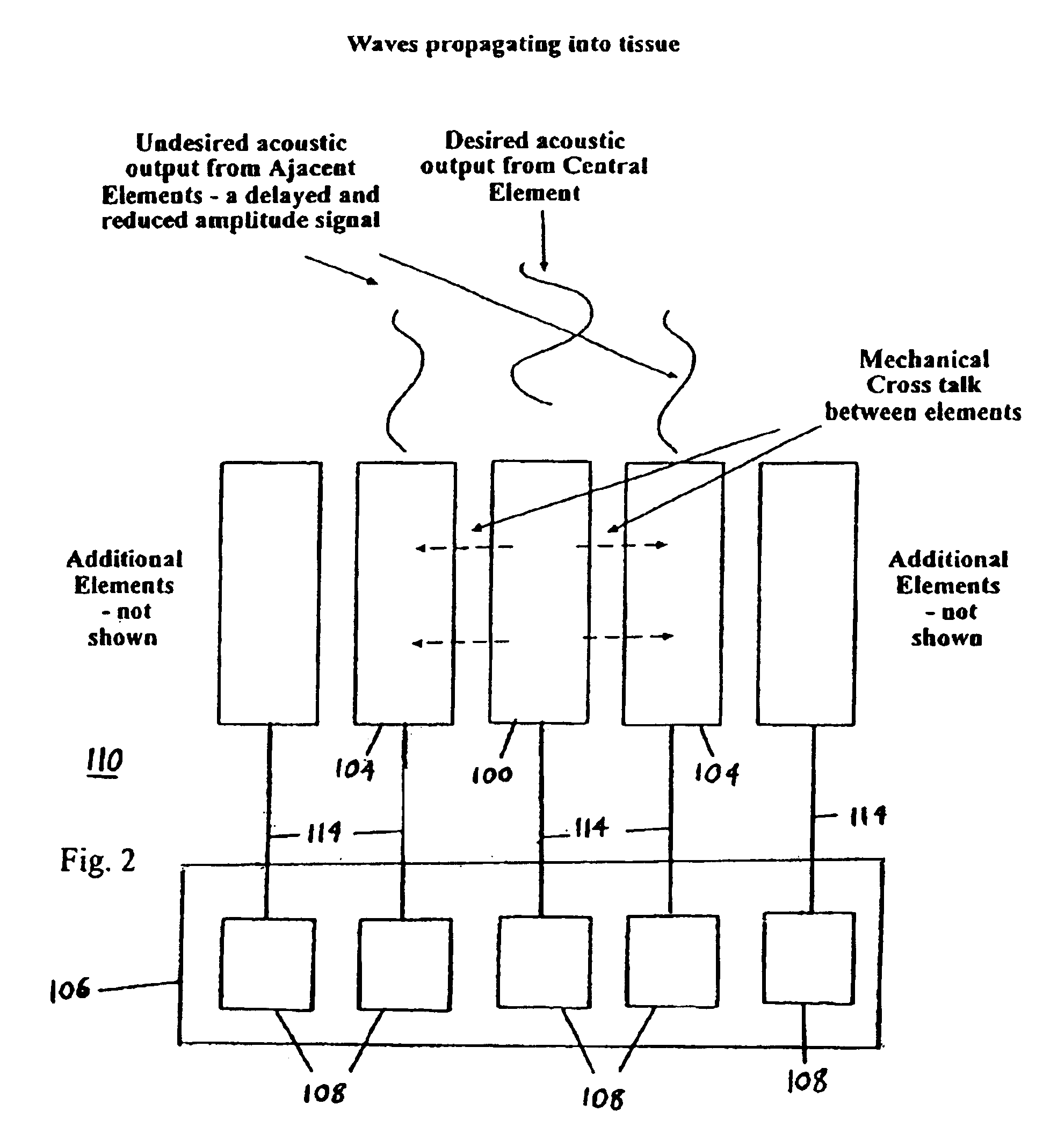Method and system for reducing undesirable cross talk in diagnostic ultrasound arrays
a diagnostic ultrasound and array technology, applied in the field of methods and systems for reducing undesirable cross talk in diagnostic ultrasound arrays, can solve problems such as degraded image, delayed cross talk signal, and beam distortion
- Summary
- Abstract
- Description
- Claims
- Application Information
AI Technical Summary
Benefits of technology
Problems solved by technology
Method used
Image
Examples
Embodiment Construction
Transmit Mode
[0065]Each array element is excited by an electrical waveform. Historically these waveforms were simple in form—impulses, steps or square wave bursts. However, the current state of the art is to use a programmable waveform. The major driving factor for this is the desire to reduce transmitted harmonic signals since it is now current practice to form the received signal image at the second harmonic of the transmitted signal since the second harmonic signal gives rise to a far higher quality image. This imaging technique is typically referred to as ‘Tissue Harmonic Imaging’. The significance of the need to reduce the transmitted second harmonic is that it is preferable to program the shape of the transmitted waveform using some form of digital waveform encoding that is fed into a D->A converter prior to amplification. Patents describing this technique in detail include Cole U.S. Pat. No. 5,675,554 and Hossack U.S. Pat. No. 5,740,128. (both of which are hereby incorporated...
PUM
 Login to View More
Login to View More Abstract
Description
Claims
Application Information
 Login to View More
Login to View More - R&D
- Intellectual Property
- Life Sciences
- Materials
- Tech Scout
- Unparalleled Data Quality
- Higher Quality Content
- 60% Fewer Hallucinations
Browse by: Latest US Patents, China's latest patents, Technical Efficacy Thesaurus, Application Domain, Technology Topic, Popular Technical Reports.
© 2025 PatSnap. All rights reserved.Legal|Privacy policy|Modern Slavery Act Transparency Statement|Sitemap|About US| Contact US: help@patsnap.com



